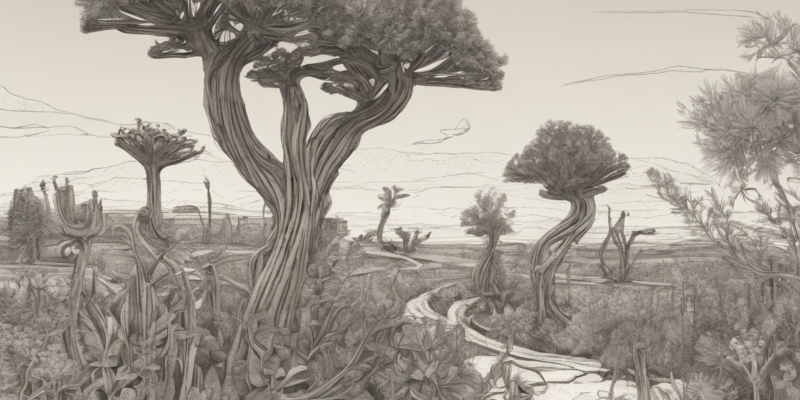Introduction:
The natural world is a remarkable canvas painted with diverse colors and harmonious symphonies of life. Among the myriad creations, plants stand out as silent yet significant contributors to Earth’s ecosystem. From the majestic oaks towering over forests to the delicate petals of a wildflower dancing in the breeze, plants captivate with their beauty and intricate mechanisms. One of the most fascinating phenomena in the plant kingdom is their ability to respond to light – a process known as phototropism. In this article, we delve into Plantae‘s remarkable adaptation of bending towards the light, unraveling the science behind this captivating behavior.
Understanding Phototropism:
Phototropism is the biological response exhibited by plants in which they grow towards a light source. This phenomenon is crucial for plants’ survival as light is essential for photosynthesis, the process through which plants convert light energy into chemical energy to fuel their growth and development. The key player in phototropism is a plant hormone called auxin. Auxin is produced in the growing tips of plants, particularly in the apical meristem, and plays a pivotal role in various plant growth processes, including cell elongation and division.
Mechanism of Phototropism:
When a plant is exposed to light, the cells on the illuminated side of the stem or shoot tip begin to produce auxin, which then migrates to the shaded side of the plant. This unequal distribution of auxin causes the cells on the shaded side to elongate more than the cells on the illuminated side, resulting in the bending of the plant towards the light source. This differential growth, known as tropic response, allows the plant to optimize its exposure to light, thereby enhancing photosynthetic efficiency.
Types of Phototropism:
There are two main types of phototropism observed in plants:
1. Positive Phototropism:
– In positive phototropism, plants exhibit growth towards the light source. This behavior is commonly observed in most plants and is essential for maximizing light absorption for photosynthesis.
2. Negative Phototropism:
– In contrast, negative phototropism involves plant growth away from light sources. This phenomenon is less common but can be observed in certain plant species where direct exposure to light may be harmful.
Factors Influencing Phototropism:
Several factors influence a plant‘s phototropic response, including:
1. Light Intensity:
– The intensity of light plays a significant role in phototropism. Plants may exhibit different bending angles depending on the intensity of the light source.
2. Light Direction:
– The direction of light source also influences the direction of plant growth. Plants typically bend towards the strongest light source.
3. Duration of Light Exposure:
– The duration of exposure to light can affect the extent of plant bending. Prolonged exposure may lead to exaggerated growth towards the light.
Applications of Phototropism:
Phototropism has several practical implications in various sectors, including agriculture, horticulture, and even architecture.
1. Agriculture:
– In agriculture, understanding phototropism can help farmers optimize crop growth by ensuring adequate light exposure for maximum photosynthetic efficiency.
2. Horticulture:
– In horticulture, growers can manipulate light sources to control the direction of plant growth, leading to aesthetically pleasing arrangements and healthier plants.
3. Architecture:
– Architects and urban planners can draw inspiration from phototropism to design buildings that harness natural light more effectively, leading to energy-efficient structures.
Conclusion:
In conclusion, the phenomenon of phototropism showcases the remarkable adaptability and resilience of plants in responding to their environment. Through the intricate interplay of hormones, cells, and light, plants exhibit a captivating dance towards the sun, seeking sustenance and vitality. By unraveling the mechanisms of phototropism, we not only gain a deeper appreciation for the beauty of the natural world but also unlock valuable insights that can be applied in diverse fields. So, the next time you see a plant gently bending towards the light, pause and marvel at the intricate choreography of nature unfolding before your eyes.
Frequently Asked Questions (FAQs):
1. What is the role of auxin in phototropism?
– Auxin is a plant hormone that plays a crucial role in phototropism by promoting cell elongation in response to light stimuli.
2. Can phototropism occur in artificial light settings?
– Yes, plants can exhibit phototropic responses to artificial light sources, provided the light spectrum and intensity are suitable for triggering the hormonal pathways involved in phototropism.
3. Are all plants capable of phototropism?
– While most plants exhibit phototropic responses to varying degrees, some plant species may show minimal or no phototropic behavior depending on their growth habits and environmental adaptations.
4. How can phototropism be studied in a controlled laboratory setting?
– Scientists often use specialized growth chambers equipped with programmable light sources to study phototropism under controlled conditions, allowing for precise manipulation of light parameters.
5. Can phototropism be reversed in plants?
– Yes, phototropism can be reversed by changing the direction of the light source, causing the plant to bend in the opposite direction over time in response to the new light stimuli.

